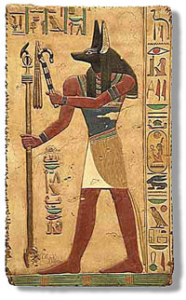Humanism is used in Greek & Roman art and it glorifies man by emphasizing the body of a human. Humanism in different art sculptures tends to evolve as it puts more detailing on the body structures and face. Egyptian & Mesopotamian art focused more on deities & gods to honor them & put them at the center. On the other hand, Greek & Roman art focuses on humans and how they’re the the center of events. They put more of a focus on humans rather than gods and goddesses. In Greek & Roman art, they emphasize the body of man by making them have certain poses and different face expressions. In one of the best known Greek sculptures known as Doryphoros by Polykleitos (image on the right), the focus is shifted from gods to humans. This art piece depicts a built, muscular man standing in a confident pose in nudity. He is standing while being nude to depict equality & to represent that the physical structure of humans were the same regardless of their social hierarchy. The artwork below (image on the left) is a depiction of Anubis, who was the Egyptian god. In Mesopotamian & Egyptian art, gods were the focus in the art pieces showing superiority over human beings. This is seen in the artwork below because Anubis is not portrayed as a human being. His head is instead, the figure has the body of a human but the head of an animal, a jackal. This shows that the gods were special because they were portrayed in a different kind of appearance compared to humans and were the focus in Mesopotamian & Egyptian art.



